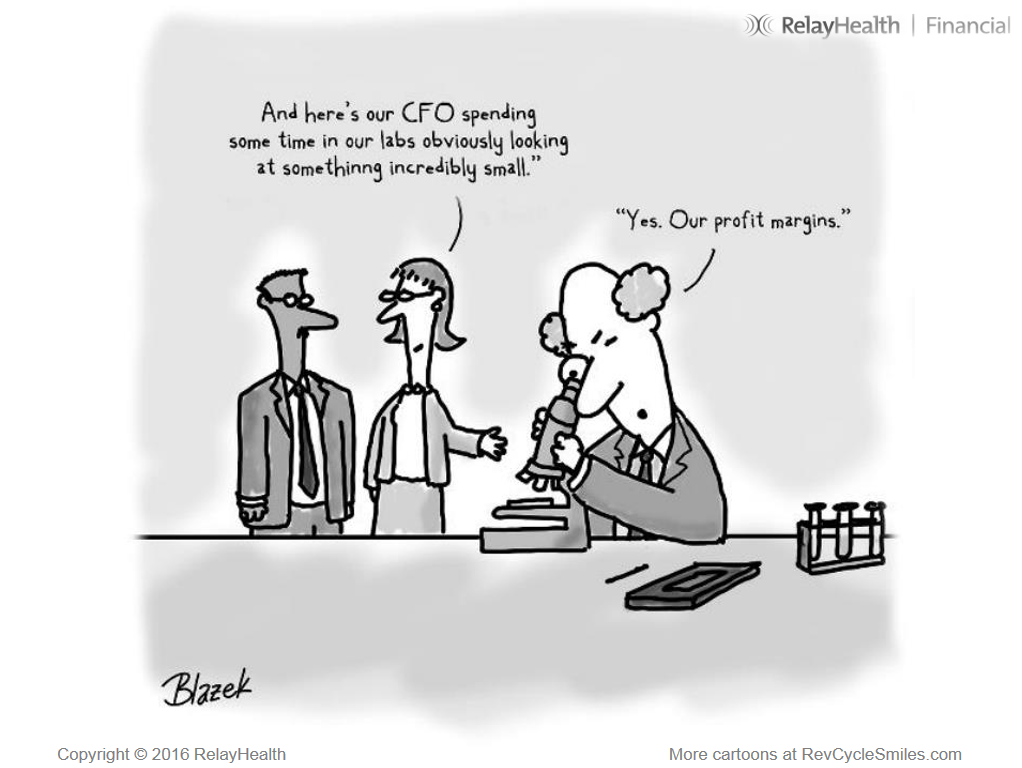
Editor’s Note: David Dyke is the Vice President of Product Management at RelayHealth Financial.
EHR-EMR conversions can be complicated and disruptive. So don’t make them more problematic by making unnecessary changes to revenue cycle management systems.
Like any major IT system implementation, an EMR conversion can be seriously disruptive to hospital operations–and finances. In addition to the many technical and clinical considerations of these projects, hospitals and health systems typically face an array of revenue cycle implications that may pose significant financial risks. Most of the pitfalls, however, are entirely avoidable, and those providers who align the technical, clinical, and financial elements of the project from the start can convert a monumental challenge into an opportunity for improvement.
During many EMR migrations, healthcare finance departments often experience increases in accounts receivable days and claim denials, along with a dip in cash flow. By identifying and addressing potential revenue cycle issues prior to implementation and as part of the EMR workflow, provider organizations can stay on track and maintain positive financial performance during the transition.
Don’t Throw the Revenue Cycle Out with the Bath Water
Such complex, multi-phased HIT projects often present opportunities to introduce new systems and technologies outside of the EMR system—including revenue cycle management. But what may appear to be an upgrade to a system that is better matched to the new EMR isn’t always that. This is where the “Ripple Effect” comes into play. The rationale is that the transition presents an ideal opportunity to more fully exploit the new EMR’s additional functionality, which typically includes many more features than the old system.
What many providers don’t realize is that such “rip and replace” strategies do not always result in upgrades to revenue cycle functionality, and can actually add an unnecessary layer of complication to the project. If your organization is using high-performance revenue cycle functions that are purpose-built for you, and your teams trust the data and the processes, it’s important to keep those systems in place and optimize them to the EMR.
Sometimes, fully leveraging a new EMR’s capabilities is a matter of turning on additional functionality in the existing revenue cycle technology that was not able to work with the legacy system. So, before any replacement strategy is pursued, work closely with your technology partners to make sure you are making full use of the systems that your team already uses and trusts.
Proactive Providers Prevail!
A fast dollar is worth more than a slow dollar, so do not sit back passively and let your new EMR make wholesale (unnecessary) changes to the technology that manages your cash flow. It’s important to weigh the true cost of changing out revenue cycle technology especially during an already tumultuous core system change. Replacement can be expensive, time consuming, and potentially detrimental to both operations and revenue. Take an active and informed role in contract details, and weigh the true value of all offers. The high cost of “free” can be another area of risk.
When it comes to healthcare reimbursement, ‘good’ is indeed the enemy of ’great,’ so don’t let a ‘good enough’ process supplant one that is already optimized. Short-term savings often come with high long-term costs in areas of efficiency, flexibility, and opportunity. You need to fully understand what benefits you could be sacrificing and what revenue cycle processes could be impacted by changing technology.
For example, in changing claims management systems, you need to understand any proposed vendor’s capabilities around patient estimation and collections, quality assurance, claim editing, Medicare claims processing, process automation, secondary claims, claim follow-up workflow, remittance management, and more. All of these elements impact the speed of payment and utilization of your revenue cycle staff. And don’t evaluate your processes within a vacuum—during or after the EMR conversion.
Do you have the right external analytics to measure performance objectively? Recently, we worked with a 2,500-bed health system that suffered from skyrocketing CCI errors and slower cash flow during an EMR migration. Using analytics, they gained visibility into sources of errors, how often they were recurring, and how fix them. The result: an overall acceptance rate that soared from 65% to over 90% (during the first 90 days), and charges for CCI error plummeting from $120M to $1M.
Keep Revenue Cycle Top-of-Mind
It is essential for revenue cycle leaders to maintain a seat at the table during an EMR change to ensure that revenue cycle vendors are proactively working with the core system vendor. These vendors need to have a strong working relationship with one another so that the clinical and financial elements of the project remain in sync. Ask your vendors for best practices for integrating systems.
A credible revenue cycle vendor will have experience with most popular EMR systems and will be able to guide you through the process of integrating systems with minimal disruption to your cash flow. From the revenue cycle perspective, a successful EMR migration is about maintaining focus. Make sure you optimize what you have, change as few things as possible, and continually monitor, measure, and review.
